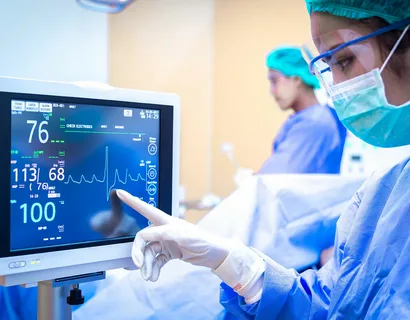The Role of IoT in Real-Time Patient Monitoring: Use Cases and Challenges
The Internet of Things (IoT) is transforming healthcare by enabling real-time patient monitoring, improving outcomes, and reducing costs. With connected devices, healthcare providers can track vital signs, detect emergencies, and deliver personalized care remotely. The importance of real-time monitoring cannot be overstated—it ensures timely interventions, reduces hospitalizations, and enhances patient engagement. As a leading remote patient monitoring software development company, the company understands how IoT-driven solutions are shaping the future of healthcare.
Key Use Cases of IoT in Patient Monitoring
Remote Health Monitoring (RPM)
IoT-powered Remote Patient Monitoring Software Development Services allow healthcare providers to track patients’ health metrics outside clinical settings. Wearable devices and sensors collect data on blood pressure, glucose levels, and oxygen saturation, transmitting it securely to physicians for analysis.
Chronic Disease Management
Patients with diabetes, hypertension, or heart conditions benefit from continuous monitoring. IoT devices alert doctors to irregularities, enabling proactive care and preventing complications.
Elderly Care and Fall Detection
For aging populations, IoT-enabled wearables detect falls and send alerts to caregivers or emergency services, ensuring rapid response and reducing risks.
Post-Operative Patient Tracking
After surgery, IoT devices monitor recovery progress, detect infections early, and reduce readmission rates by ensuring compliance with post-op care plans.
Emergency Alert Systems
IoT-based emergency systems automatically notify medical teams during critical events like cardiac arrests, improving survival rates through faster interventions.
Benefits of IoT-Based Remote Patient Monitoring Software
- Continuous Data Collection: Real-time tracking provides comprehensive health insights, leading to better diagnoses.
- Reduced Hospital Readmissions: Proactive monitoring prevents complications, lowering healthcare costs.
- Personalized Care: IoT enables tailored treatment plans based on real-time patient data.
- Improved Efficiency: Automating data collection reduces manual errors and enhances workflow for providers.
Challenges in the Implementation of Remote Patient Monitoring Software Development
Despite its advantages, IoT in healthcare faces hurdles:
- Data Security & Privacy: Protecting sensitive patient data is critical. Compliance with HIPAA and GDPR is essential for any hospital management software development company.
- Device Interoperability: Seamless integration with Electronic Health Records (EHRs) remains a challenge.
- High Setup Costs: Infrastructure investments can be significant, but long-term savings justify the expense.
Future Outlook and Innovations
The future of IoT in healthcare is promising, with advancements like:
- AI & Predictive Analytics: Machine learning analyzes patient data to predict health risks before they escalate.
- Blockchain for Secure Data Exchange: Ensures tamper-proof health records and secure sharing between providers.
- Smart Implants & Wearables: Next-gen devices will offer even more precise monitoring and treatment options.
Conclusion
IoT-driven real-time patient monitoring is revolutionizing healthcare by improving accessibility, efficiency, and outcomes. While challenges like security and costs persist, the benefits far outweigh the hurdles. As a top hospital management software development services provider, a healthcare software development company can empower healthcare innovators to adopt cutting-edge IoT solutions. Partner with the best hospital management software development company to build secure, scalable, and interoperable IoT solutions that transform patient care. The future of healthcare is connected—let’s build it together.


